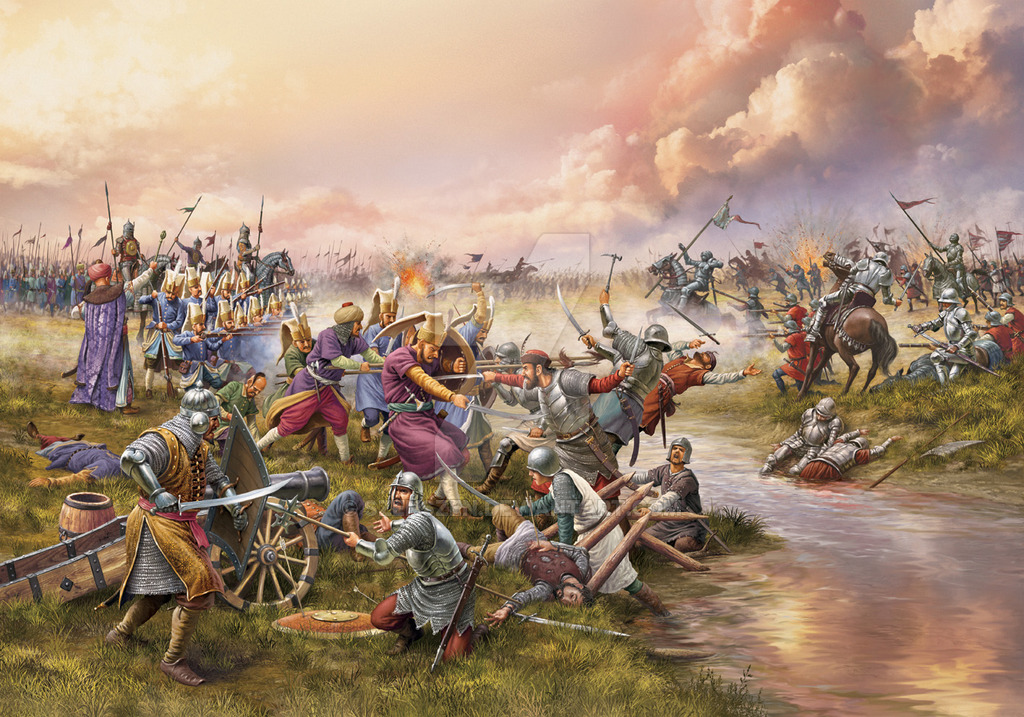The Battle of Mohács, which erupted in the summer of 1526, was a major Ottoman victory over the Hungarian king Louis, marking the end of the Jagiellon dynasty. Led by Suleiman I the Magnificent, the Ottoman troops, estimated at 100,000 strong, crushed the far smaller Hungarian forces on the open plain of Mohács. Besides having numerous soldiers, the Ottomans had far superior weaponry that included artillery and highly skilled marksmen.
One of the first so-called gunpowder empires, the Ottomans effectively used cannons to stop the charging Hungarian cavalry
  |
Following the victory, Suleiman swiftly moved on to conquer the twin cities of Pest and Buda, the Hungarian capital on the Danube River
As result of their victory, the Ottomans incorporated Hungary into their expanding empire. The Habsburgs, rulers of the Holy Roman Empire, took advantage of the destruction of most of the Hungarian nobility to increase their authority in central Europe, and the two great empires began their long struggle against one another for control of southern and central Europe.
